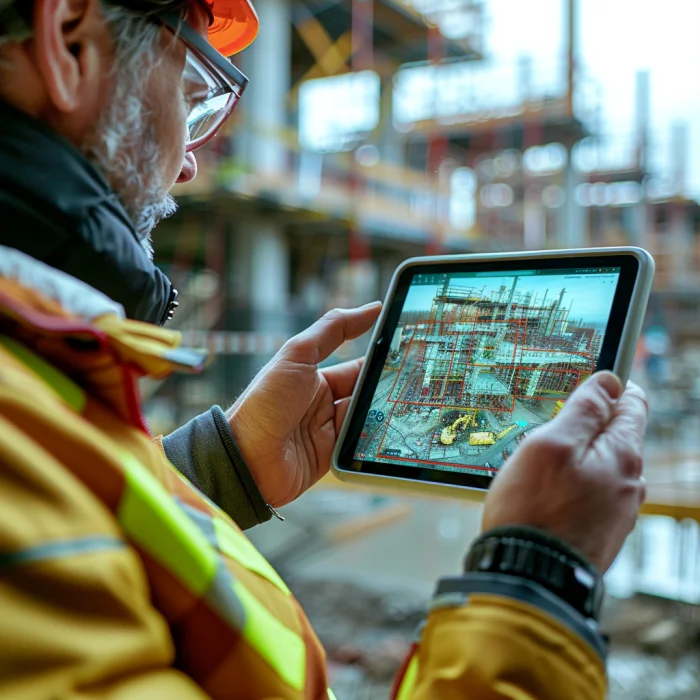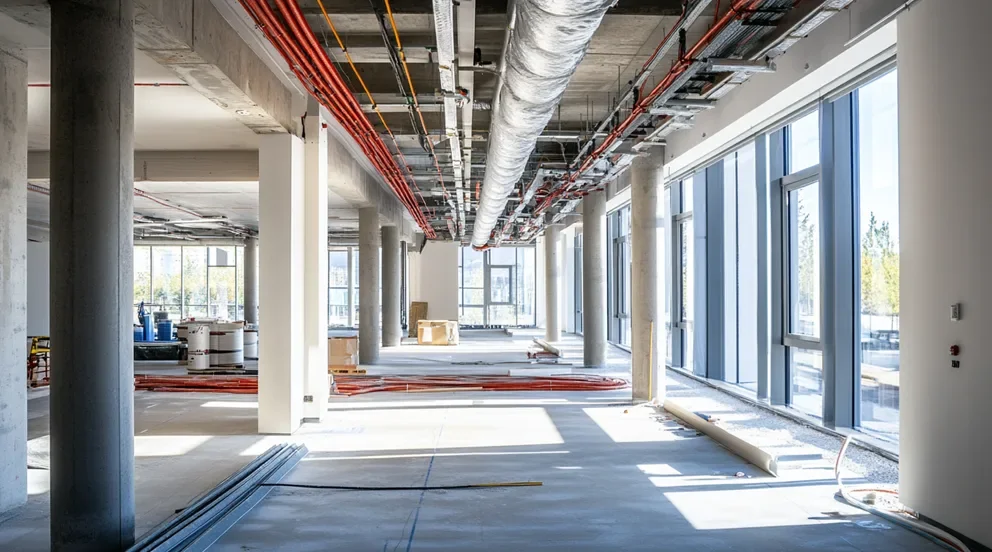Construction Mapping Software refers to digital tools that enable project managers, engineers, and architects to visualize, plan, and oversee construction projects more effectively. These software solutions integrate Geographic Information System (GIS) data, Building Information Modeling (BIM), and other mapping technologies to create detailed and dynamic maps of construction sites.
These tools are invaluable for project planning, as they provide a comprehensive view of the construction area, including topography, existing structures, and environmental factors. This helps in assessing potential challenges and risks that may arise during the construction process.
Moreover, Construction Mapping Software facilitates real-time collaboration between team members. By allowing multiple stakeholders to access and update project information, these tools enhance communication and coordination, ultimately leading to more efficient project execution and reduced delays.
The construction industry is often tasked with managing complex projects that require meticulous planning and precise execution. Construction Mapping Software has emerged as a game-changer, offering cutting-edge solutions to these challenges. These advanced tools provide unparalleled visualization, planning, and management capabilities, helping to streamline various aspects of construction.
Incorporating technologies such as GIS and BIM, Construction Mapping Software allows teams to create comprehensive digital representations of construction sites. This not only aids in project planning but also helps in identifying potential risks and obstacles before they become significant issues. Thus, these tools play a crucial role in project risk management.
The collaborative aspect of Construction Mapping Software cannot be overstated. By enabling real-time updates and information sharing among project stakeholders, these solutions promote seamless communication and coordination. As a result, construction projects can be completed more efficiently, saving both time and resources.
Benefits of Construction Mapping Software
Construction mapping software offers numerous advantages, playing a pivotal role in modern project management. One major benefit is enhanced collaboration. Teams can easily share updates and access real-time data, leading to better-informed decisions. This improved communication minimizes misunderstandings, reducing costly delays.
Additionally, project accuracy is significantly increased. With precise mapping and visualization tools, potential issues can be identified early. As a result, project managers can implement solutions before problems escalate. This proactive approach often saves both time and money.
Another benefit is improved efficiency. Construction mapping software streamlines processes that typically require substantial manual effort. Automated updates ensure that everyone is working from the most current plans. Consequently, the likelihood of errors due to outdated information is diminished.
Furthermore, resource management is optimized using construction mapping software. Teams can track the use of materials and machinery with greater precision. This leads to more effective budgeting and resource allocation. With better resource management, projects often stay within budget and finish on time.
Ensuring site safety is another critical advantage. The software can identify hazardous areas and flag them for attention. This feature helps in preventing accidents and ensuring compliance with safety regulations. By reducing the risk of injuries, companies can maintain a safer work environment.
Moreover, the software offers valuable analytics. Project managers gain access to insights from historical data. These insights can inform future projects, improving planning and execution. Utilizing past data highlights potential risks and showcases best practices.
In conclusion, the benefits of construction mapping software are extensive. Enhanced collaboration, increased accuracy, and improved efficiency all contribute to smoother project execution. Additionally, better resource management, heightened safety, and valuable analytics ensure long-term benefits. Embracing construction mapping software can transform project management in the construction industry.
Types of Construction Mapping Software
Construction mapping software has revolutionized the way the industry operates. It enables professionals to streamline project management, enhance accuracy, and improve decision-making. There are several types of construction mapping software, each with unique features and benefits.
One category is Geographic Information Systems (GIS). GIS software integrates spatial data with attribute data to create comprehensive maps. These maps can display various layers of information, such as topography, utilities, and zoning regulations. GIS is particularly useful for site analysis and planning, allowing professionals to visualize potential issues and opportunities before construction begins.
Building Information Modeling (BIM) software is another crucial type. BIM goes beyond traditional 2D drawings by creating detailed 3D models of buildings. These models include information about the building’s components, such as materials and dimensions. The 3D nature of BIM aids in collision detection, ensuring that different systems within a building do not interfere with each other. Additionally, BIM helps in improving collaboration among project stakeholders, as everyone can access and annotate the same model.
Surveying and GPS software are also essential in construction mapping. Surveying software assists surveyors in collecting and analyzing land data. It provides precise measurements, helping to lay out construction sites accurately. GPS software, on the other hand, uses satellite data to provide real-time location tracking. This is invaluable for managing large projects where equipment and personnel need to be monitored efficiently.
Drone mapping software has gained popularity in recent years. Drones equipped with cameras can capture detailed aerial images of construction sites. These images are processed by the software to create high-resolution maps and 3D models. Drone mapping is excellent for monitoring construction progress and identifying issues that might not be visible from the ground.
In addition to these, there are specialized construction management platforms. These platforms often combine several features of the previously mentioned software types. They enable project managers to oversee every aspect of a project, from initial planning to final completion.
In conclusion, the diversity in construction mapping software allows professionals to choose the best tool for their specific needs. Each type offers unique advantages that can significantly enhance the efficiency and accuracy of construction projects.
Key Features to Look for in Construction Mapping Software
When choosing construction mapping software, several key features can significantly enhance the efficiency and accuracy of your projects. Firstly, real-time data integration is crucial. This feature allows users to access the most current information, ensuring they possess up-to-date details about ongoing projects. Incorporating GPS technology can further enhance this aspect by providing precise location data.
Furthermore, user-friendly interfaces make a significant difference. A clear and intuitive interface simplifies the learning curve for new users and streamlines existing processes for seasoned professionals. This feature can greatly reduce time spent on training and increase overall productivity.
Another important feature is advanced analytics capabilities. Construction projects generate vast amounts of data. Thus, having software that can efficiently analyze this data and provide actionable insights is invaluable. Features like predictive analytics can help in forecasting potential issues, allowing for proactive problem solving.
Moreover, interoperability with other software and platforms cannot be overlooked. Seamless integration ensures that data flows smoothly between different systems, reducing the risk of data loss and redundancy. This feature is particularly beneficial in complex projects involving multiple stakeholders.
Additionally, robust security measures are essential. Construction data often includes sensitive information. Therefore, ensuring that your software has strong security protocols can protect against data breaches and ensure compliance with relevant regulations.
Lastly, customer support and training resources should not be ignored. Even the most advanced software can present challenges to its users. Access to reliable support services and comprehensive training materials can make a significant difference in the overall user experience, helping to maximize the software’s potential.
In conclusion, when selecting construction mapping software, prioritize real-time data integration, user-friendly interfaces, advanced analytics, interoperability, robust security, and reliable customer support. By considering these key features, you can ensure that your choice will effectively meet the demanding needs of your construction projects.
Implementation Challenges and Solutions for Construction Mapping Software
Implementing construction mapping software poses various challenges. One primary difficulty is the integration with legacy systems. Construction companies often rely on older software and hardware. These existing systems may not seamlessly integrate with newer mapping solutions. This can lead to compatibility issues that require costly workarounds. To address this, a phased integration approach can be employed. This allows for gradual adaptation while minimizing disruptions.
Another significant challenge is ensuring data accuracy. Construction projects involve vast amounts of data from different sources. Inaccurate data can lead to errors in mapping and analysis. To combat this, companies should implement robust data validation processes. Regular training sessions can also help staff maintain high data quality standards.
User adoption is another critical hurdle. Many employees may be resistant to change, especially when it involves learning new technology. Overcoming resistance requires comprehensive training and support. Workshops and hands-on training sessions can be effective. Additionally, choosing user-friendly software can make the transition smoother.
Cost is a major consideration. The initial investment for mapping software can be substantial. Small to medium-sized companies might find it especially burdensome. However, the long-term benefits often outweigh the initial outlay. Improved project planning and execution can lead to significant cost savings over time.
Moreover, security concerns must be addressed. Construction mapping software often contains sensitive data. Unauthorized access or data breaches can have severe consequences. Implementing advanced security measures, such as encryption and multi-factor authentication, is essential.
Lastly, continuous maintenance and updates are necessary. Software must be regularly updated to fix bugs and add new features. This ongoing requirement requires dedicated resources. Nevertheless, staying current ensures the software remains effective and secure.
In conclusion, while implementing construction mapping software presents numerous challenges, strategic planning and proactive measures can mitigate these issues. Through careful integration, accurate data practices, robust training, thoughtful cost management, strict security, and regular maintenance, companies can fully leverage the benefits of construction mapping software.
Future Trends in Construction Mapping Software
The construction industry is undergoing rapid technological advancements. One significant area of innovation is construction mapping software. These tools are indispensable for creating accurate site plans and ensuring project efficiency. Several future trends are poised to transform this field even further.
First, the integration of artificial intelligence (AI) will revolutionize construction mapping software. AI can analyze vast amounts of data quickly. Consequently, it provides more accurate predictions and optimizations. This trend will make it easier to anticipate problems and make necessary adjustments before issues arise. Moreover, machine learning algorithms will enable continuous improvement in mapping accuracy over time.
Another emerging trend is the use of drones for data collection. Drones can capture high-resolution images and videos of construction sites. This data can be processed by mapping software to create detailed 3D models. As a result, project managers will gain better spatial awareness. Additionally, drones reduce the need for manual site inspections, thus enhancing safety and efficiency.
The adoption of Building Information Modeling (BIM) technology is also becoming more widespread. BIM allows for the creation of detailed digital representations of buildings. When combined with mapping software, it provides a comprehensive view of both existing structures and future builds. This integration helps in better planning, coordination, and execution of construction projects.
Cloud computing is another trend transforming construction mapping software. Storing data on the cloud allows for real-time collaboration among project stakeholders. This ensures that everyone has access to the most up-to-date information. Consequently, decisions can be made faster and more efficiently. Cloud-based solutions also offer scalability, making it easier to handle large projects.
Finally, augmented reality (AR) is making its way into construction mapping software. AR overlays digital information onto the physical world. This capability helps construction professionals visualize changes in real-time. It also aids in error detection and improves overall project outcomes.
In conclusion, these trends will greatly enhance the capabilities of construction mapping software. By adopting these innovations, the construction industry can expect increased efficiency, safety, and accuracy in their projects.



